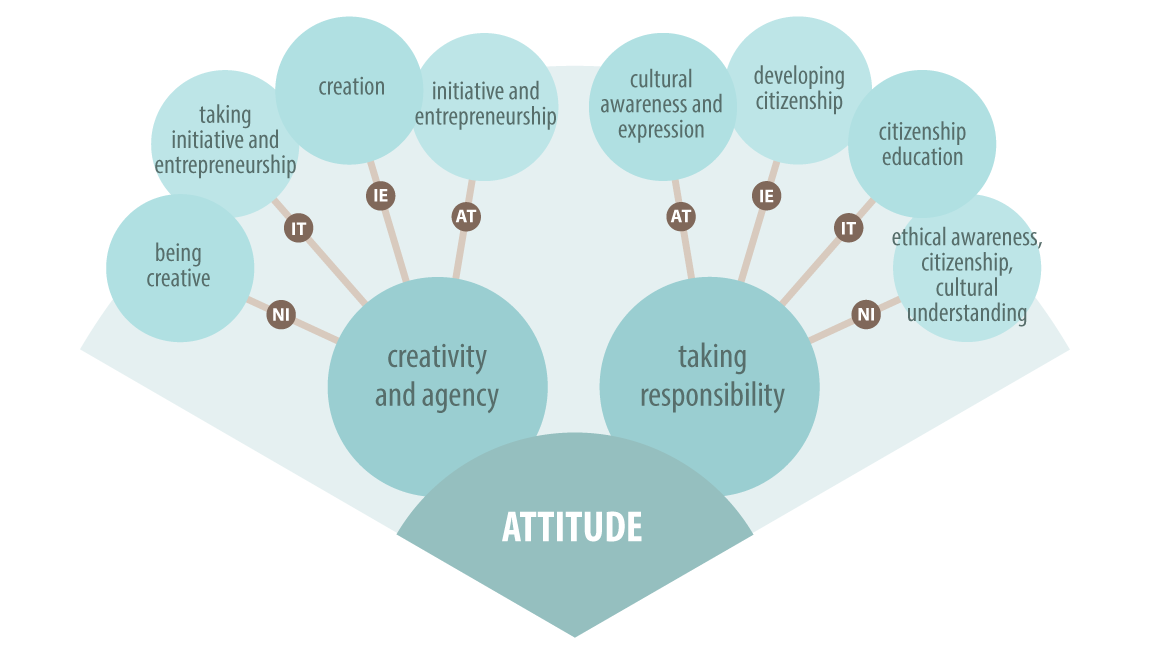Shaping and Framing Attitudes

Students develop values and attitudes within their learning environment. The school curriculum provides a formal framework, but the development of attitudes takes place through their peers and teachers as well as through the wider school community. Within CEPNET, the approach is very conscious as to how the “hidden curriculum” can support and provide a scaffolding to our students as attitudes, values and behaviours are developed.
This section allows for some reflection on how the application of the CEPNET project within almost 20 different classrooms in 4 very different schools, each operating within a different curricular system, helped teachers to shape attitudes in relation to both the subject matter of sustainability and global citizenship, as well as themes of community and shared connections. Teachers and principals also discuss the associated pressures of making the CEPNET approach come to life, while also delivering on the curriculum.
Creativity and Agency
A key feature of the CEPNET approach is that it recognises that our students, teachers and prinicpals are part of a larger learning ecosystem in which parents and communities play an important role. Through the CEPNET phases of dialogue, research and presentation, our students are encouraged to examine this set of relationships and where they can fit and how they can try to provide an influence. As they move through these three phases, they are actively co-creating a different type of learning environment in their classroom, supporting this informal hidden curriculum where values and attitudes are shaped. Within their groups and as they create connections with peers in other classrooms and countries, they become role models in fostering attitudes and values among their peers. As we demonstrate in our development work on the CEPNET competence framework, these strategies are in place to make sure the formal curriculum is also effectively implemented.
As our students began to work on their projects, they were able to flex their creative muscles. Their research would lead them in very many directions and they self-managed these steps of collecting information and data. How they chose to represent their work became a matter for their own consideration. In the following example, a group of students decided to use a new presenting format and their green screen technology to examine issues of education.
A teacher also emphasises how through their participation in such projects, that there can be an increase in confidence and agency. Some of the students are able to use this type of more informal learning space to thrive and excel.
Taking Responsibility
The initial phases of CEPNET in the classroom are focused on exploring the meaning of global citizenship and sustainability. Through discussing about the SDGs, and bringing local concerns to the fore, we open up a space where our students can start to discuss and assess what is right or wrong, good or bad in specific situations. We can ask questions about values from the individual and connecting to a collective, what should I do? was I right to do that? If I was the Minister, what would my priorities be? How would decisions affect others? These discussions and debates support an understanding that attitudes and values are central to all aspects of their learning.
A principal involved in the implementation of CEPNET within the school over two cycles believes that this represents a key impact on the students and reinforces the desire to embed the approach within the school.
The following project provides an example as to how a group of students followed up on their own specific experiences of playing sport and how they had already noticed many small differences in how they were being treated as girls. They carried out a series of interviews with their peers and a successful local footballer to examine these issues in more detail. Their focus on equality and looks to the core of how the CEPNET approach allows for a shaping of values and attitudes, through promoting this informal or hidden curriculum.

